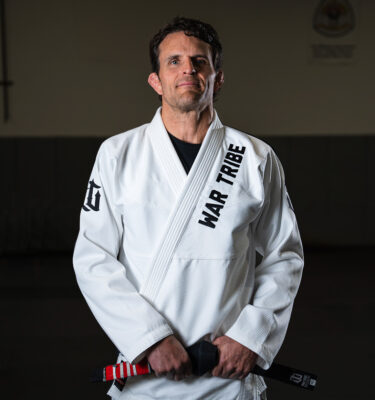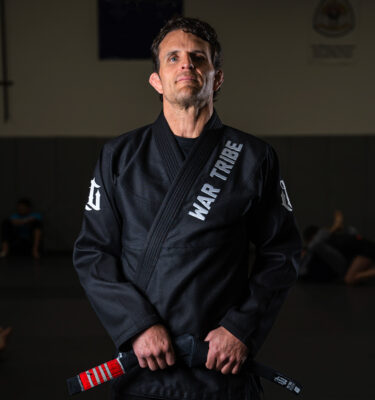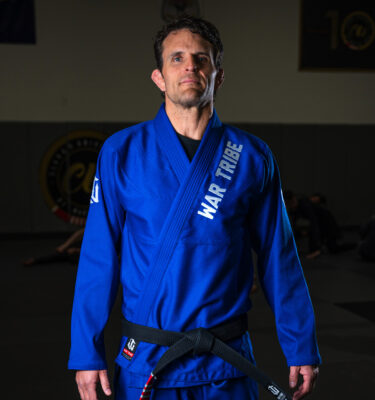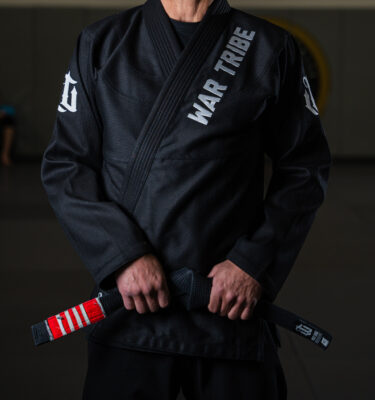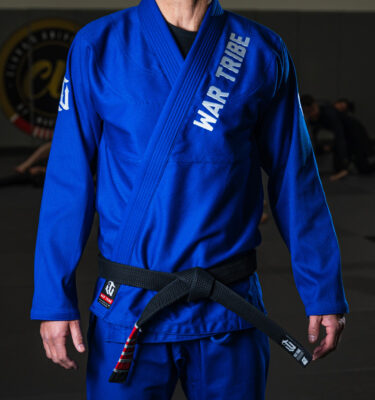
Although MMA and the famous UFC were originally created to show the effectiveness of Brazilian Jiu-Jitsu against other forms of fighting, the world of MMA has changed dramatically since it’s first big exposure to the world in the early 1990s. The biggest thing is that it has almost become a martial art of its own, in a way. Now we are seeing “MMA gyms” and “MMA classes”. Basically combining striking, wrestling and BJJ into one martial art, and while this is good in some ways, it can be detrimental in others because the fighter can really, only be good in all aspects but not great at any. While the world of MMA has drastically changed since then, so has the world of BJJ. The sport of Jiu-Jitsu has grown tremendously, but the self-defense aspect has faded away. This was the original reason why Jiu-jitsu became so popular; that a smaller person could defend themselves against a much larger and stronger opponent. While the sport of Jiu-jitsu is amazing to watch and very fun to practice, the fading to the original “old school” BJJ has been one of the reasons why sport Jiu-jitsu practitioners are unsuccessful when testing the waters of MMA. Having said that, here are 5 things to focus on when wanting to transition from BJJ to MMA:
-
Brush up on your fundamentals
If you come from a traditional BJJ academy, with a strictly self-defense, basic submissions, simple takedowns, closed guard program for about the first 6 months before even learning any sort of spider guard or modern techniques, then the first thing you should do is go back to attending that class, just so you can get a quick brush up on those techniques. If you come from more of a sport jiu-jitsu background, and aren’t too familiar with basic self-defense principles, mainly punch protection and distance management, it would be wise for you to learn it as much as you can. Although you are a grappler and are comfortable off of your back or in any close situation, when punches are involved it is a completely different ball game and every position you normally would do is changed with that in mind. An armbar from guard is not the same, shooting for a takedown is not the same. It is a different mentality when it comes to grappling in MMA, so if you’re not used to that, it definitely should be first on your list of things to work on.
-
MMA Wrestling
This is a term that gets thrown around a lot and it’s important to understand what it really means. The main difference between freestyle wrestling and MMA wrestling is simply in the way the takedowns are set up. You wouldn’t shoot for a single or double leg in a fight the same way you would in a wrestling match. In a fight your posture is completely different and there is much more distance to cover as well as things to be aware of, such as being caught with a punch or a knee while shooting in carelessly. You need to learn the fundamentals of takedowns but odds are if you are seasoned in BJJ you already know how to shoot a basic single or double leg so don’t stop drilling that, just adjust the way you drill the entry. Working on setting your takedown up with punches is a great way to do this. Also, it is good to drill takedowns from when your opponent is trying to hit you, get out of the way of the punches and close the space while they’re invested on trying to hit you. Without going into too much technical detail, these are simple things to keep in mind since your strong point is BJJ and you most likely want to get the fight to the ground as quickly and safely as possible.
-
Boxing
There are many forms of striking and each is effective in its own way. The reason boxing is a great place to start is because you will learn how to properly throw punches as well as develop good footwork which is something that people coming from BJJ might have trouble with since they are typically flat footed. Boxing is also great because you learn how to properly slip, block and counter punches, which is something that is good to know, and you can adapt to the MMA wrestling mentioned above. Finally, learning to punch and getting comfortable doing it while you’re fighting is very important because it gives your opponent something else to worry about. If they know you just want to get them to the floor then you become predictable, but when you add the weapon of strikes to your arsenal you become much more dangerous and it will open up the takedown much more which for BJJ guys is the ultimate goal.
-
Learning Kicks
Kicking is also extremely important. Unlike boxing, in MMA you can strike using both your arms and legs, and while boxing might give you a great base, sooner or later you are going to have to learn to throw kicks and more importantly, defend them. Kicking is not only a great way to inflict punishment on your opponent, but as a BJJ based fighter they are a great way to maintain distance and keep your opponent at bay. There are many martial arts that offer kicks. It really is up to you which you feel works best for you. Muay Thai seems to be the most adaptable to MMA today, however there are many other styles that offer kicks as well, so it really is up to you which style you prefer, but do not neglect learning and practicing kicks.
-
Sparring Smart
Sparring MMA can be just as dangerous as fighting. When sparring, remember to be careful and not go with 100% intensity every time, but when you do, make sure you are well protected, wearing big gloves, having your hands wrapped, shin guards, cup, mouthpiece, headgear and even good knee padding if you plan on throwing knees. If you come from a BJJ background and aren’t used to getting hit, then you will probably need to spar as much as you can to you get used to having strikes thrown at you and not going into a panic. Someone new to getting hit can sometimes freeze to make sure you are getting sparring in but do it in a safe way without trying to knock each other’s heads off. Remember that you want to simulate the fight, practice the techniques you have been working on in real time and get your cardio ready for that fight feeling so that you are comfortable in there. Having said that, you also want to make it through the camp healthy so find a healthy balance, try not to spar too hard and when you do, it shouldn’t be very often and you should be fully protected to avoid cuts or injuries.

